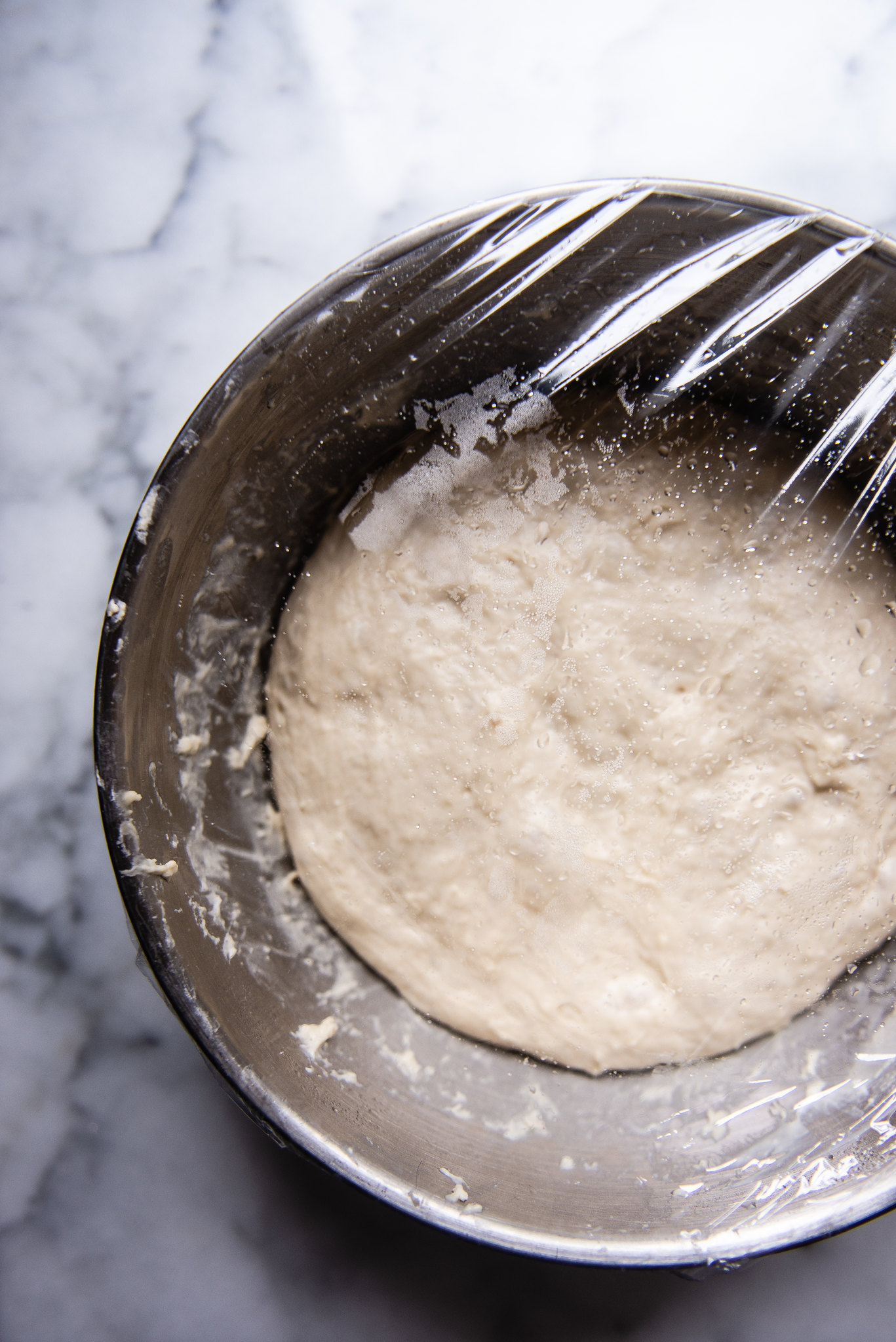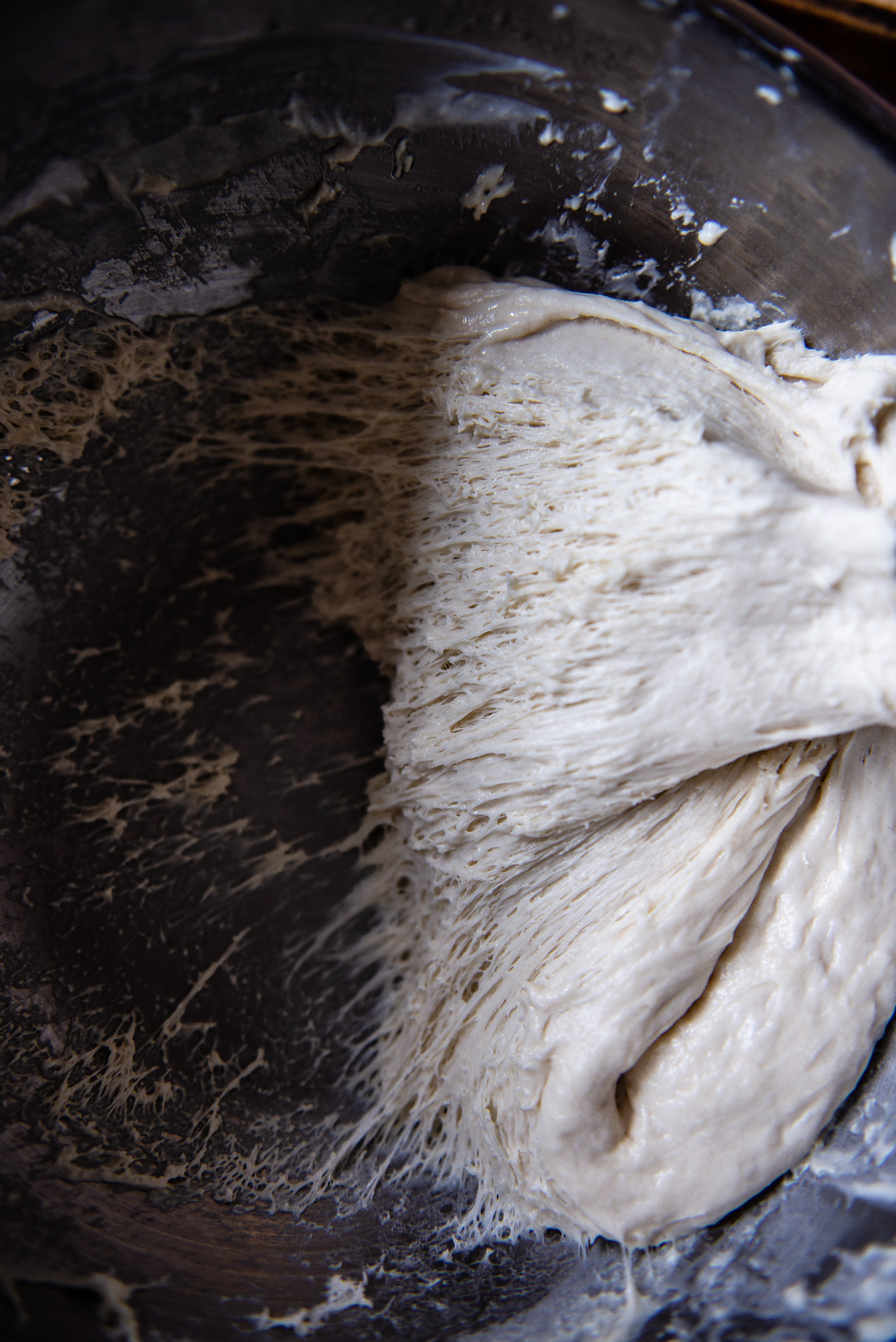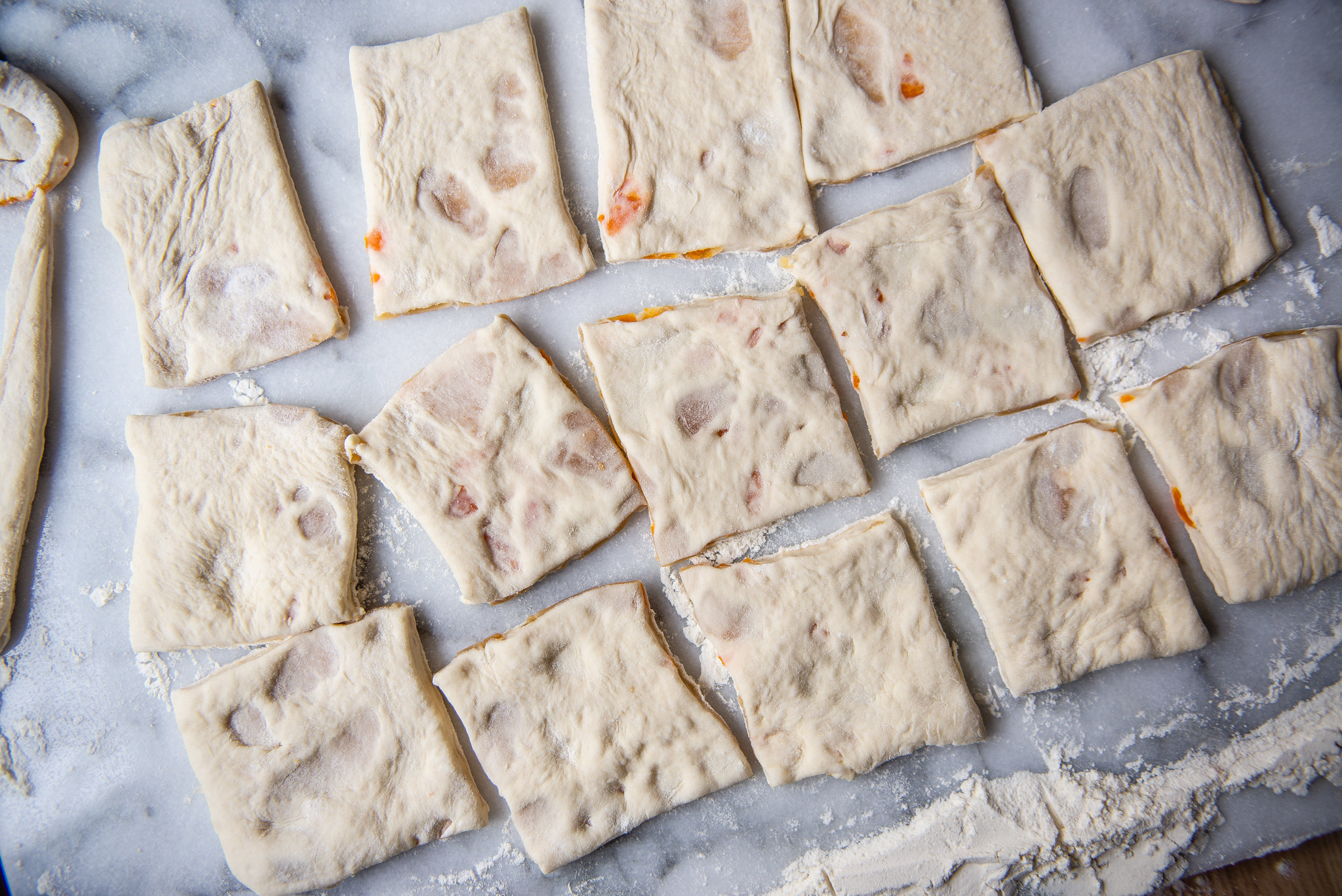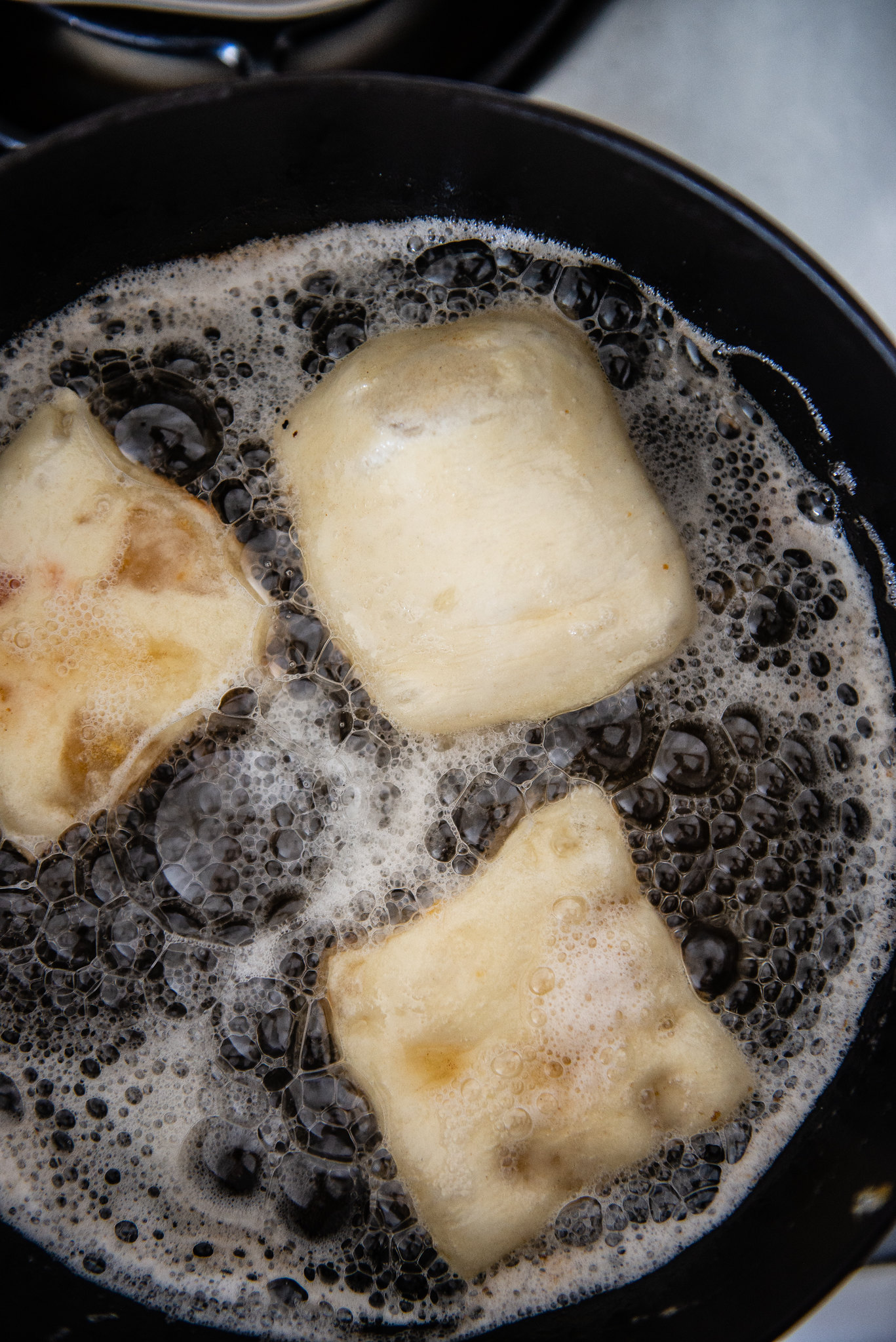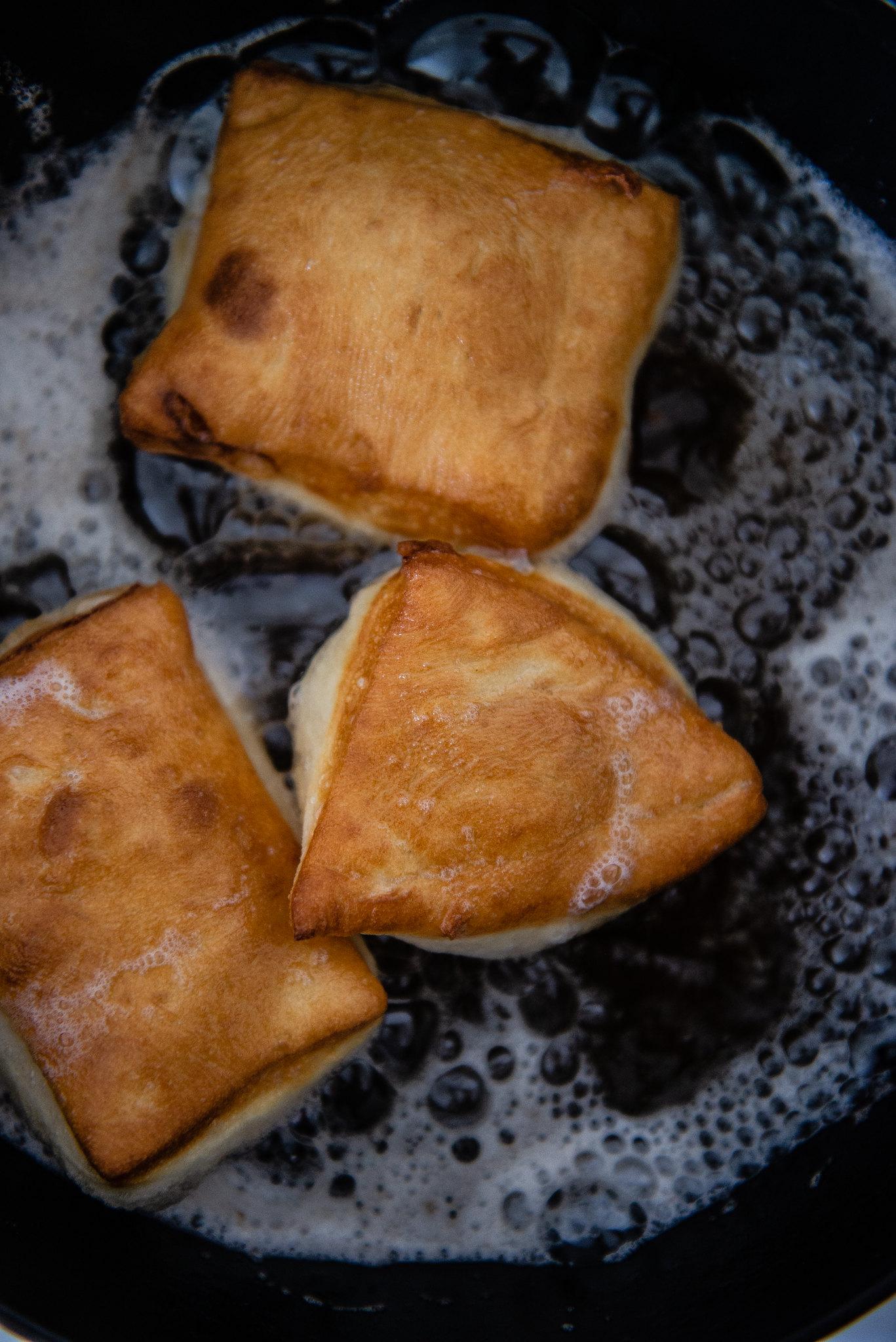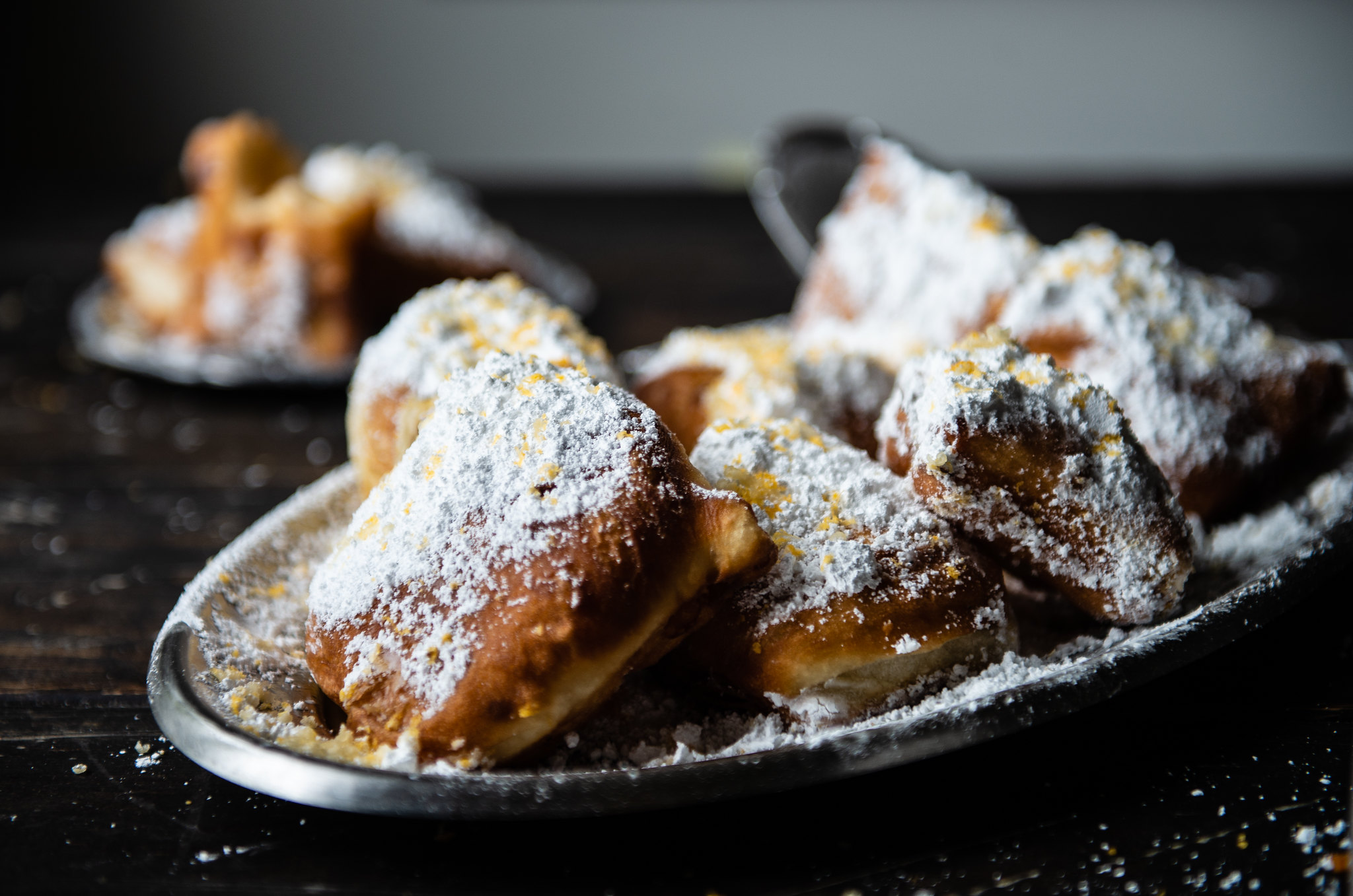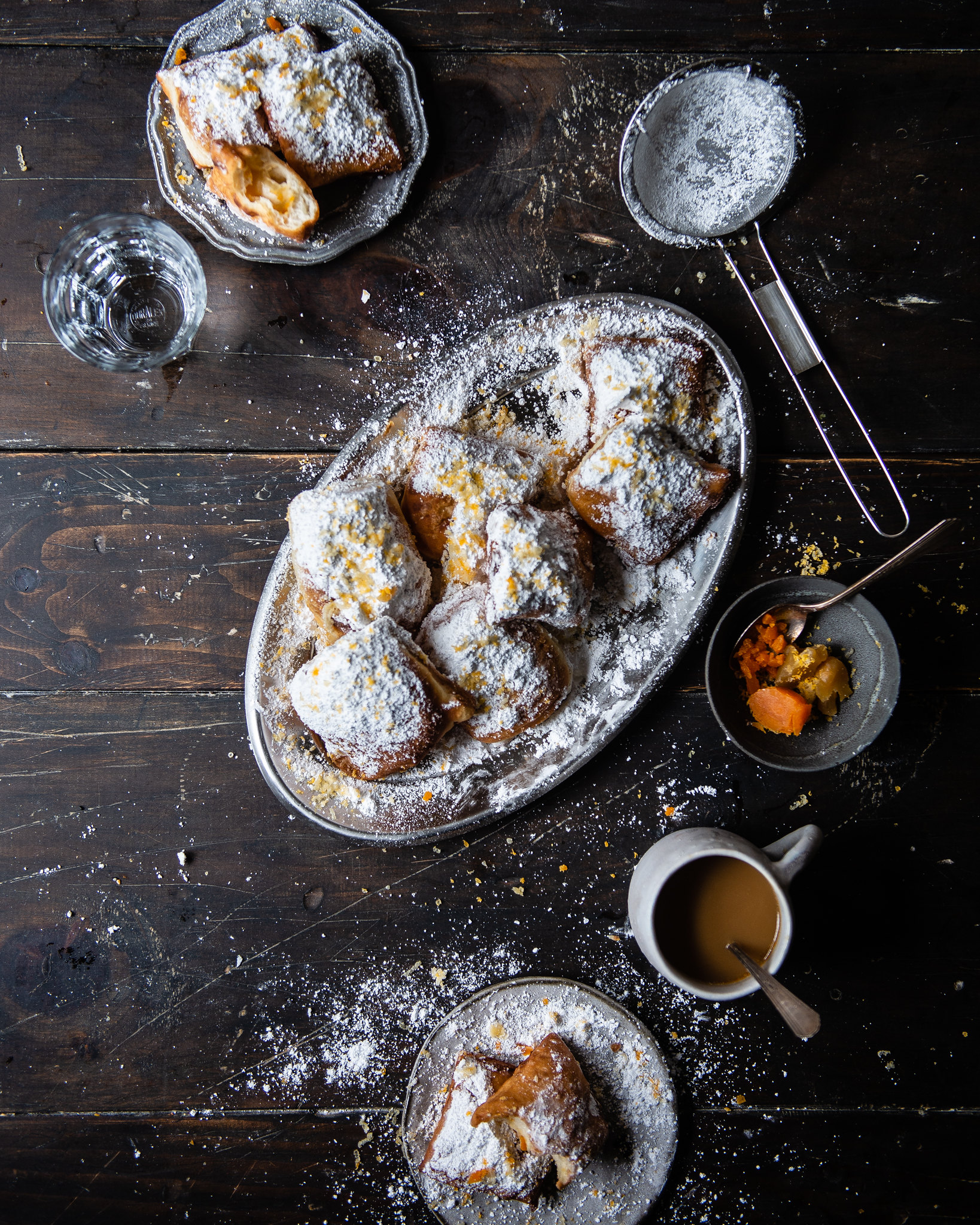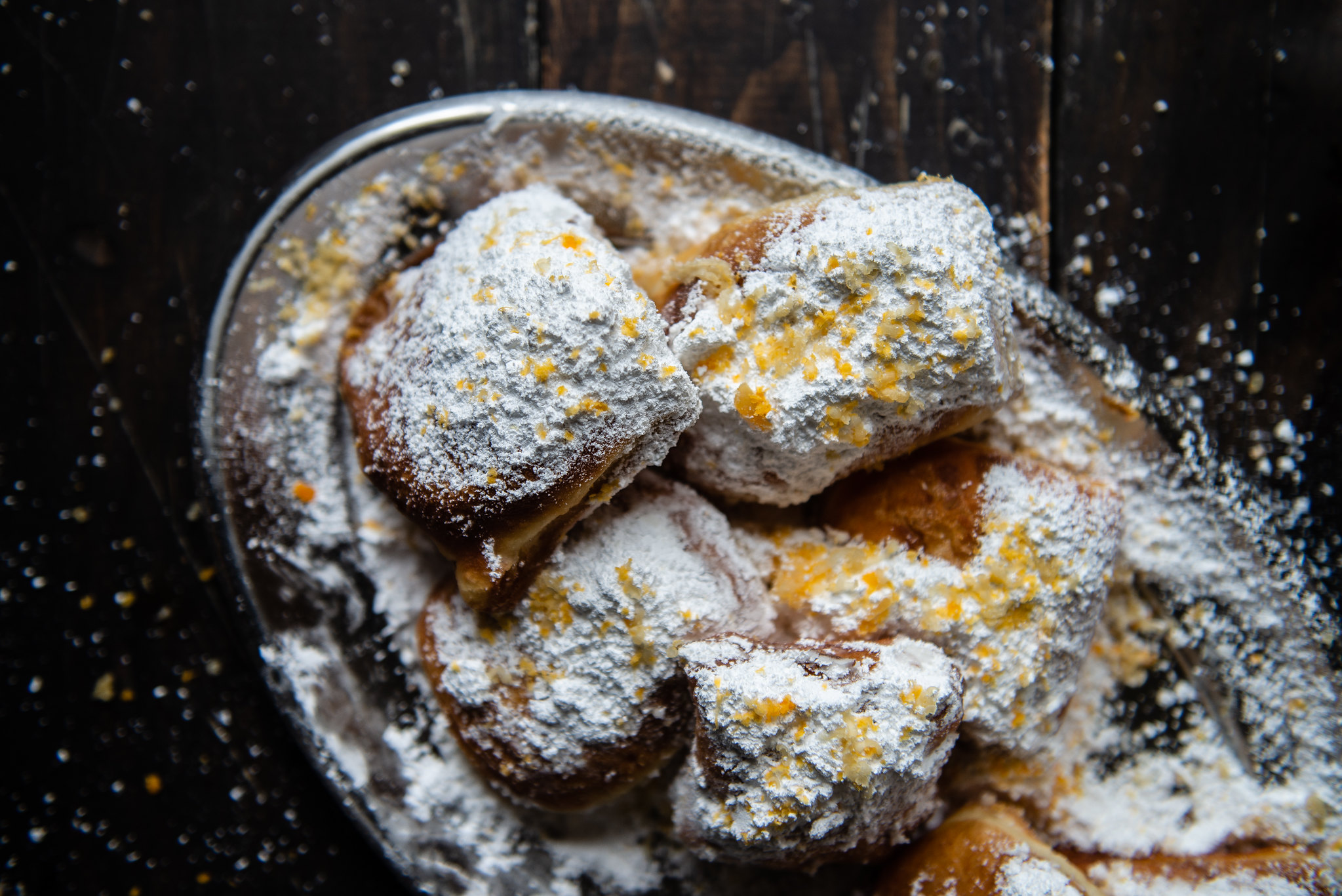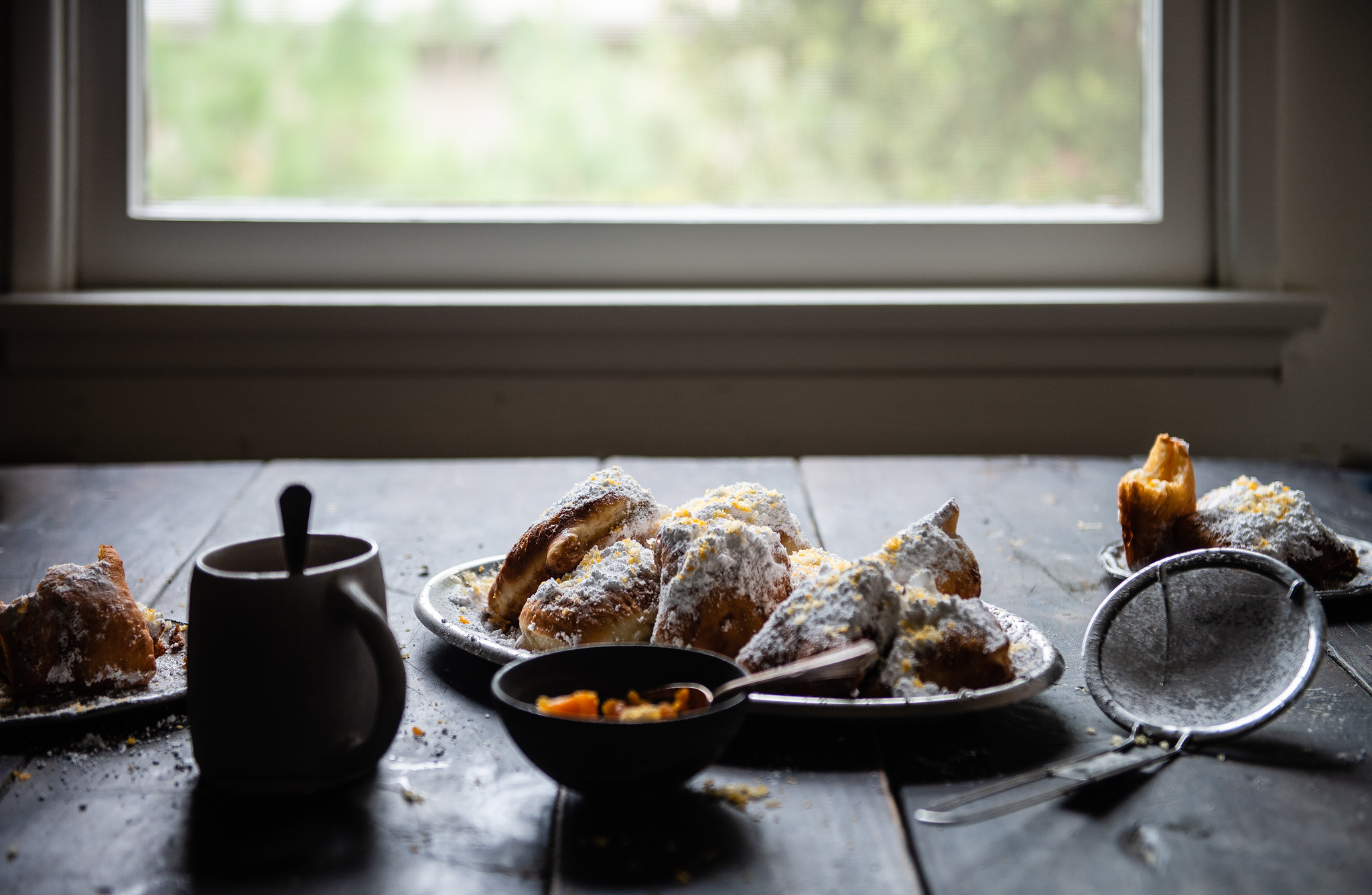salted yolk & lotus paste beignets
Beignets! It’s been awhile since a capital-P Project has landed on this blog. Since the advent of our little guy, I’ve been more tempted to fill my Saturday mornings with alphabet books and trips to the playground and the occasional quick and easy food experiment than making extended messes in the kitchen. But then a few weeks ago, while daydreaming about the upcoming Mid-Autumn Festival and all the mooncakes that it heralds, the idea of these salted yolk and lotus paste beignets popped fully-formed into my head. My very favorite flavor of mooncake, silky, fragrant lotus paste and punchy orange yolk, but dispersed throughout an airy, tender beignet instead of in a dense mooncake? They were, at that moment, as good as made.
So over Labor Day weekend, a Project these became. The one thing that has always daunted me about homemade beignets is their lofty reputation–how cloud-like they are at their ideal, as ethereal as the puffs of powdered sugar that waft out as you eat them. But then I came across Joy’s recipe, which not only omits butter and egg, but is “lighter and fluffier” than those vaunted New Orleans gold standards. I was incredulous, but lo and behold, they were the airiest, softest fried pillows that have ever come out of my kitchen. (I am now having a serious think over how to remake these.)
On top of that, this recipe might actually be the easiest that one of these food adventures can be. Because the dough is so wet, I gave it the Bread-in-5 / Jim Lahey no-knead treatment and, instead of kneading by hand or in a mixer, gave it a stir and left it to sit in an extra-long overnight rise. I thought about folding the lotus paste and egg yolk into each beignet individually, but then settled for layering it into the dough and discovered, happily, that that worked just as well. (Not so with the other beignet recipe I tested for this, where the layers split open in the oil and all the filling fell out, but I digress.) They fry up faster than you’d think, puffing up cheerful and buoyant, and before you know it, you’re ready to devour a pile of tender, feather-light dough clouds, hiding pockets of smooth, aromatic lotus paste and nutty egg yolk in their midst. These are best eaten the day they’re made–in other words, they’re perfect for having a crowd over, in the true spirit of Mid-Autumn Festival, to enjoy. Happy 中秋节!
Yield: makes about 1 dozen large or 2 dozen small beignets
Adapted from Joy the Baker.
- ¾ cup whole milk
- 2 tablespoons granulated sugar
- 1 teaspoon active dry yeast
- 6 tablespoons Greek yogurt (see Notes if using buttermilk)
- 2 cups (about 256 grams) bread flour, plus about ½ cup extra for flouring the work surface
- ¼ teaspoon baking soda
- ¼ teaspoon salt
- ½ to ¾ cup lotus paste, homemade or storebought
- 2 to 3 salted egg yolks, homemade or storebought
- 2 to 3 quarts canola oil, for frying
- About 2 cups powdered sugar, for dusting
- The night before, or 8 hours ahead: Heat the milk in a small saucepan over medium heat or a microwave just to a boil, about 2-3 minutes on the stovetop or 1 minute in the microwave. (This scalds the milk, so that no enzymes in the milk prevent the yeast from doing their thing.) If you find you’ve created a film on the surface of the milk by heating it too much, just pour it through a sieve.
- When the milk is just warm but no longer hot, about 100-110 degrees, stir in the sugar, then gently stir in the active dry yeast and let it sit for 5-10 minutes, or until foamy. If the milk-yeast mixture does not foam, you may want to start over to make sure your yeast is active.
- In a large bowl, stir together the flour, baking soda, and salt. (See Joy’s original recipe for instructions on using a stand mixer.) Once the milk mixture is nice and foamy, add the Greek yogurt to the milk mixture and whisk until combined. Pour the yogurt-milk mixture into the flour mixture and stir until a shaggy, very wet dough forms. It will be sticky and too wet to knead by hand. This is good!
- Instead of kneading by hand, use a sturdy spatula to “knead” the dough in the bowl by stirring or folding the dough in on itself repeatedly. Do this for about 5-6 minutes, or until the dough grows smoother and more elastic. It doesn’t need to be perfect--the beauty of the overnight rise is that it’ll take care of anything we can’t kneading by hand. When you’re done, cover the dough lightly with plastic wrap or one of these. I like to leave it not totally airtight, as I find that a complete seal can make the dough taste slightly of alcohol the next day.
- The day of: Once the dough is well-doubled, use a sturdy spatula to scrape the dough onto a well-floured surface. Generously flour the top of the dough, then roll out to a rectangle about a ¼-inch in thickness.
- Crumble the egg yolk and lotus paste into small pieces (see Notes if your paste is very soft) and sprinkle them evenly and generously across the dough. Fold the dough in half lengthwise, then again widthwise, into quarters.
- Flour the dough again, then roll the dough out one more time to a rectangle about ½- to ⅓-inch in thickness. The dough should be wet enough that the layers hold together. Use a floured pizza cutter or knife to cut the dough into about 12 or so pieces (or more, for smaller beignets).
- Fill a heavy-bottomed saucepan (I like using a Staub Dutch oven for this) with enough oil to fill it to a depth of about two to three inches. Heat over medium-high heat to 375 degrees F, using a candy thermometer or instant read thermometer to check the temperature. Place several layers of paper towel on a clean work surface or large plate, and a cooling rack on top, if you have one.
- When the oil is hot, use a fish spatula or spider skimmer to gently add the beignets to the hot oil. Try not to overcrowd the pan--like Joy, I fried about three at a time. Fry until golden brown on both sides, flipping them once or twice during frying, about 2 to 3 minutes. Remove from oil and place on cooling rack or paper towels to drain. Immediately dust with a generous amount of powdered sugar.
- Make sure the oil is back at 375 degrees F, then repeat with the other batches of beignets until all the dough is cooked through and dusted with sugar. Grate extra lotus paste (things I did not know were grate-able until now) and salted egg yolk, if desired, and serve immediately. These are best straight out of the fryer or eaten within a few hours of frying--have lots of friends over and enjoy!
The lotus paste is ideal here if it can hold its shape, almost like the consistency of fudge. If you have homemade lotus paste or your paste is very soft, cook it over low heat in a skillet to firm it up a bit.
If using buttermilk instead of Greek yogurt, use 6 tablespoons milk and ¾ cup buttermilk, adding the buttermilk where the Greek yogurt is called for.
The post salted yolk & lotus paste beignets appeared first on Two Red Bowls.

